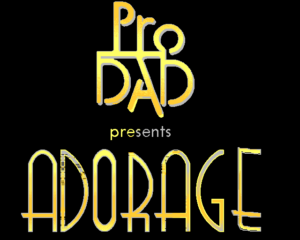Since my last post got many comments (more than one counts as many here) about various codecs, I feel I need to clarify my views on what I see as over-engineered codec as well as under-engineered codec.
First of all, let’s define what does not make a codec an over-engineered one. The sheer number of features alone does not qualify: the codec may need those to fulfill its role—e.g. Bink Video had many different coding modes but this was necessary for coding mixed content (e.g. sharp text and smooth 3D models in the same picture); and the features may have been accumulating over time—just look at those H.26x codecs that went a long way, adding features at each revision to improve compression in certain use cases. Similarly it’s not the codec complexity per se either: simple methods can’t always give you the compression you may need. So what is it then?
Engineering in essence is a craft of solving a certain class of problems using practical approaches. Yes, it’s a bit vague but it shows the attitude, like in the famous joke about three professionals in a burning hotel: an engineer sees a fire extinguisher and uses it to put out fire with the minimum effort, a physicist sees a fire extinguisher, isolates a burning patch with it and studies a process of burning for a while, a mathematician sees a fire extinguisher, says that there’s a solution and goes to sleep.
Anyway, I can define an over- or under-engineered codec by its design effectiveness i.e. the amount of features and complexity introduced in relation to the achieved result as well as the target goal. Of course there’s rarely a perfect codec so I’ll use a simpler metric: a codec with several useless features (i.e. those that can be thrown out without hurting compression ratio or speed) will be called over-engineered and a codec which can be drastically improved without changing its overall design will be called under-engineered. For example, an RLE scheme that allows run/copy length of zero can be somewhat improved but it’s fine per se (and the decoder for it may be a bit faster this way); an RLE scheme that uses zero value as an escape with real operation length in the following byte is under-engineered—now you can code longer runs but if you add a constant to it you can code even longer runs and not waste half of the length on coding what can be coded without an escape value already; and an RLE scheme that allows coding the same run or copy in three different ways is over-engineered.
And that’s exactly why XCF is the most over-engineered format I’ve even seen. Among other things it has three ways to encode source offset with two bytes: signed X/Y offsets, signed 16-bit offset from the current position or an unsigned 16-bit offset from the start. And the videos come in either 320×200 or 320×240 size, so unless you have some weird wrap-around video you don’t need all those addressing modes (and actually no video I’ve tried had some of those modes used). Also since the data is not compressed further you can’t claim it improves compression. Speaking of which, I suspect that wasting additional bits on coding all those modes for every block in every frame negates any potential compression gains from specific modes. There are other decision of dubious usefulness there: implicit MV offsets (so short MVs are now in range -4,-4..11,11 for 8×8 blocks and -6,-6..9,9 for 4×4 sub-blocks), randomly chosen data sources for each mode, dedicated mode 37 is absolutely the same as mode 24 (fill plus masked update) and so on.
Of course there are more over-engineered codecs out there, I pointed at Indeo 4 as a good candidate in the comments and probably lots of lossless audio codecs qualify too. But my intent was to show what is really an over-engineered codec and why I consider XCF to be the worst offender among game video codecs.
As for under-engineered codecs, for the reasons stated above it’s not merely a simple codec, it’s a codec where a passerby can point out on a thing that can be improved without changing the rest of the codec. IMO the most fitting example is Sonic—an experimental lossy/lossless audio codec based on Bonk. Back in the day when we at libav discussed removing it, I actually tried evaluating it and ended with encoded files larger than the original. And I have strong suspicion that simply reverting coding method to the original Bonk or selecting some other sane method for residue coding would improve it greatly—there’s a reason why everybody uses Rice codes instead of Elias Gamma’. Another example would be MP3—there’s a rumour that FhG wanted it to be purely DCT-based (as AAC) but for patent holder’s consideration it had to keep QMF, making the resulting codec more complex but less effective.
P.S. The same principles are applicable to virtually everything, from e.g. multimedia containers and to the real world devices like cars or computers, but I’ll leave exploring those to the others.
